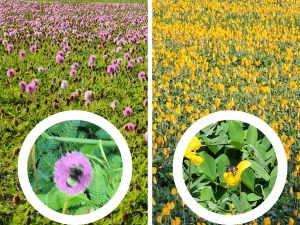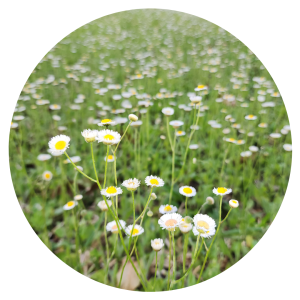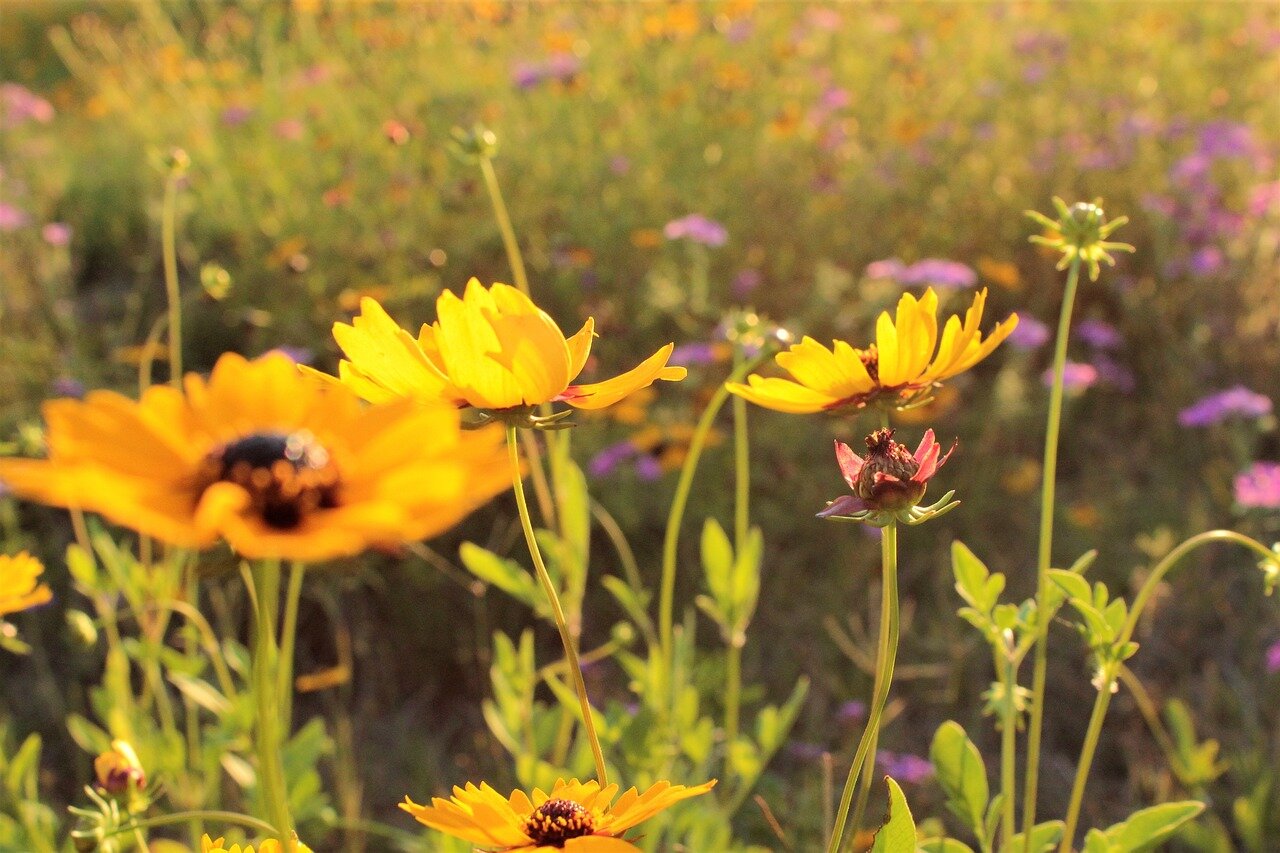Turfgrass is largely still dormant in our county and hasn’t started its overwhelming summer growth. Instead, much of the growth in the next few weeks will be native wildflower blooms like Blue-eyed grass (Sisyrinchium angustifolium Mill.), Manyflower Pennywort (Hydrocotyle umbellata L.), Oakleaf Fleabane (Erigeron quercifolius Poir.), and Bay Lobelia (Lobelia feayana A.Gray) in the featured image. These species and others will be highlighted in the Lawn Ornament Blog Series in the coming weeks as they peak, so check back frequently!
Make sure to check out the Starter Guide: Embracing Lawn Ornaments: A Starter Guide

Considerations: Follow Local Ordinances and HOA Rules

While most of the wildflowers highlighted in this series do not exceed 12 inches in height, it’s important to acknowledge and adhere to any restrictions or guidelines set forth by Sarasota County, local municipalities, and homeowner associations. While embracing nature’s beauty, let’s also ensure we’re respecting our communities’ regulations. If you disagree with the rules imposed on you, you can always voice your concerns and work to bring about policy changes.
Quick Hitters:
- Unincorporated Sarasota County: Vegetation cannot exceed 12″.
- City of North Port: Vegetation cannot exceed 12″.
- City of Venice: Vegetation cannot exceed 12″.
- City of Sarasota: Vegetation cannot exceed 10″.
- City of Longboat Key: Vegetation cannot exceed 12″.
If you live outside of those areas, you can access your local ordinances through municode. If you live in a HOA, consult your bylaws for potentially further restrictions.

Mullet Landscaping: Business in the front, party in the back!
I have found the best approach is to keep landscaping at the very front of the property manicured in a more traditional fashion. Then implement shrubs, hedges, and landscaping beds to screen the rest of the property from public eye. Away from the public’s eye, you can have higher mowed areas and avoid turf grass completely. I value privacy and have never understood why people landscape their property for the road view, not for their personal view from the house.
Why March?
In regions further north, the concept of ‘No Mow May‘ has gained traction as a way to support pollinators and native plants. However, here in Florida, where the seasons dance to a different rhythm and wildflowers bloom earlier, “No-Mow March” is more apt. By refraining from mowing during this critical time, we give pollinators a head start as they emerge from their winter slumber, providing them with vital resources for survival.

Will You Participate?
So, as March unfolds and nature begins to stir, consider joining us in embracing the beauty of “No-Mow March”. Let your lawn explode in blooms, and in doing so, celebrate the wonders of spring wildflowers and the vital role they play in sustaining our environment. Together, let’s create a greener, more vibrant Sarasota County for generations to come.
Resources
- UF/IFAS Mowing your Florida Lawn: https://edis.ifas.ufl.edu/publication/lh028
- UF/IFAS Webpage on the No Mow March Movement: https://sfyl.ifas.ufl.edu/escambia/lawn-and-garden/no-mow-march/
- UF/IFAS No Mow March Blog from the Panhandle: https://blogs.ifas.ufl.edu/news/2023/02/21/no-mow-march/
- UF/IFAS No Mow March Blog from the Panhandle: https://blogs.ifas.ufl.edu/escambiaco/2024/02/27/celebrate-pollinators-with-no-mow-march-2/
During the preparation of this work, the author used ChatGPT to help build the blog post. After using this tool/service, the author reviewed and edited the content, and takes full responsibility for the content of the publication.






Comments
No comments on this item Please log in to comment by clicking here